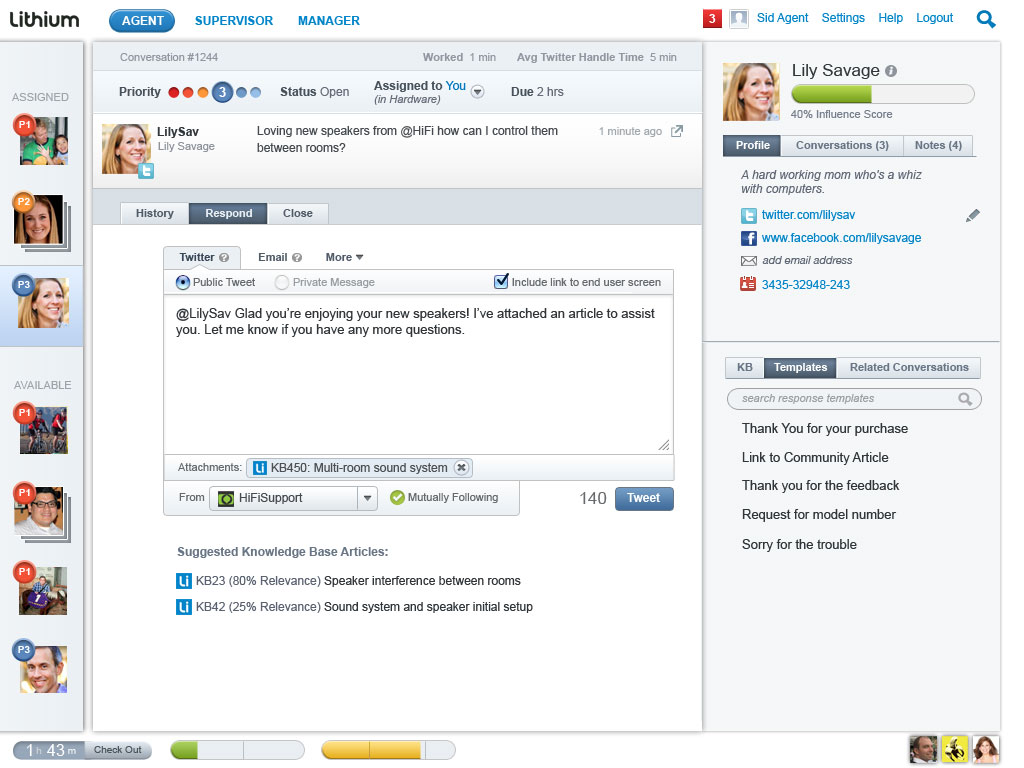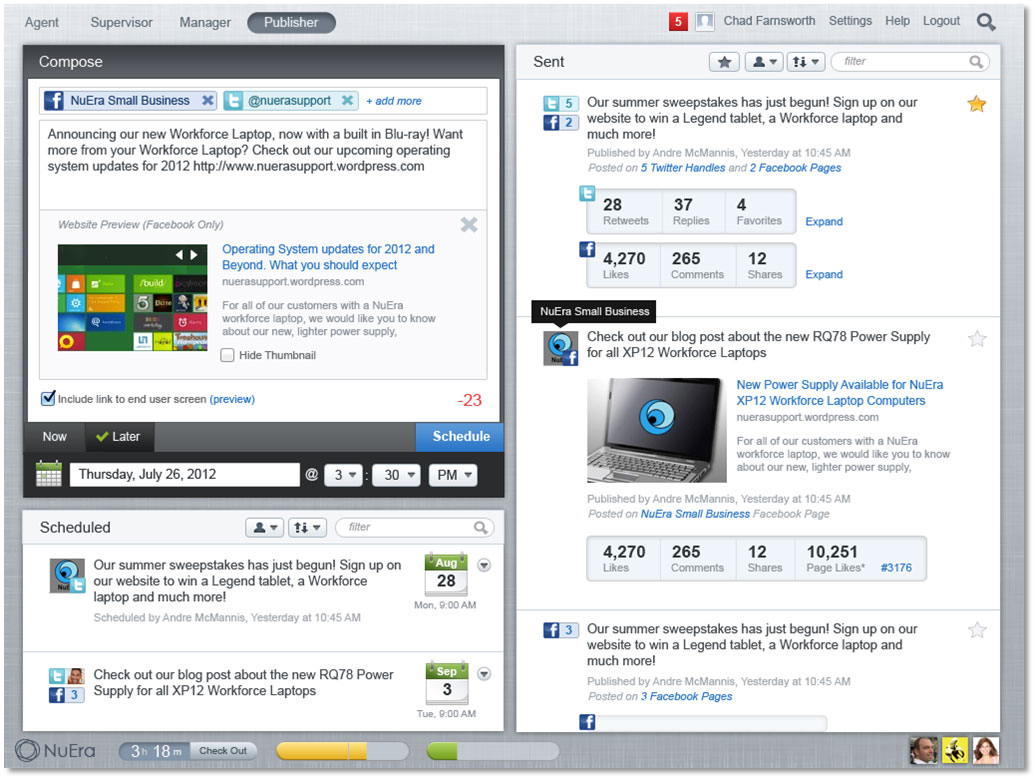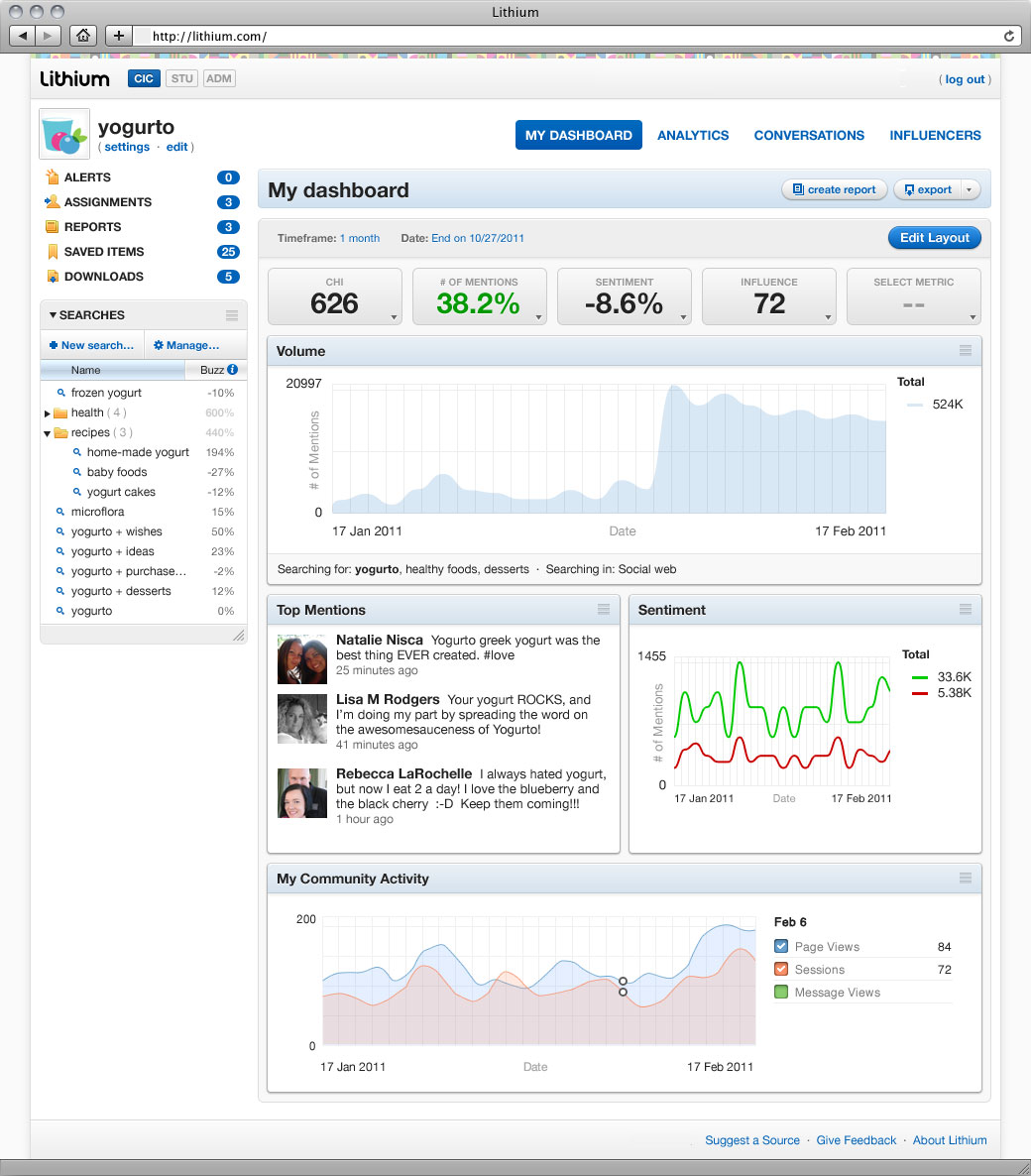Social Marketing
Social Monitoring Tools
Build Brand Advocacy through Online Communities with Lithium

Social has completely changed the way companies interact with their audience, moving a great deal of the conversation to places like Facebook and Twitter. However, no enterprise should completely give up their community of users to social networks. Instead of letting Facebook be the gatekeeper of a customer’s social experience with a brand, Lithium Technologies has been working for over a decade on bringing communities back to company websites. We sat down with Lyle Fong, co-founder and Chief Strategist, to talk about Lithium’s vision for social and how enterprises can harness their communities for better brand engagement.
To learn more about Lithium Technologies, visit their website or our product profile of the Lithium Social Customer Suite.
I see that you’re no stranger to starting new companies, so how did Lithium come into being and what was the problem that you set out to solve?

WEBSITE: www.lithium.com
FOUNDED: 2001
LOCATION: Emeryville, CA
CUSTOMERS: Best Buy, Sephora, AT&T, HP, Univision, Paypal
Was there any difficult part about getting things off the ground? It sounds like it happened pretty organically.
It started off organic and we actually bootstrapped the company without raising any money for about seven years. Initially, you’re trying to solve the problem of whether it’s possible for large brands who are not consumer web properties to take advantage of some of the things that people do in the consumer web. Try to figure out a way to create communities of thousands, and in some cases, millions of their customers on their website. Then, with that passion and enthusiasm and fanaticism, drive these folks to not only help each other, but help create content and knowledge for companies and spread advocacy for the companies. At that time, of course, even the term social media didn’t exist yet.
What do you think makes Lithium stand out in the social world and what are you guys doing differently from other solutions?
Certainly, the space is very crowded. We’re very fortunate. I think just last month, Gartner put us as one of the leaders in the magic quadrant. I think part of our success has been due to the fact that we come from that consumer web world where we think of the world in a slightly different way than traditional enterprise software. Whereas most enterprise software thinks of things as features and functions–do you have blogs, do you have forms, do you have chat, do you have photos, galleries, etc?–we think of it from a different perspective. We think of the user experience first and foremost, and we use the data of every click that a user has on the site just like a consumer web company does. We try to figure out what caused this user to click this button or caused that user to leave. Our goal, just like in the consumer web, is eyeballs. We want people to come to the site, and when they find it, we want them to stick around for hours, if possible, and come back every day, invite their friends, create a bio loop. As a result, we’ve been pretty successful with this methodology to drive engagement in our platform, which is the precursor and prerequisite to almost anything we want to do with these customers.
So would you say the way Lithium ensures that your product delivers a superior result for your customers is to focus on engagement?
I think that’s fair to say, and it’s a little bit more than that. So on one hand there’s trying to figure out how to drive real engagement. It’s not about how many features this thing has, it’s about whether this really touches my heart, and do I love using this product, and is it something that I want to come back to? But that’s not sufficient in itself. Another area that we use to drive success is what a lot of folks nowadays call “gamification,” although I don’t really like that term. It’s a concept of trying to build game-like experiences into the application to try to incentivize consumers to behave in a certain way, and then reward them for those actions.
One of the things that is a core premise of our business is the customer out there advocating for brands. The customers are answering questions potentially for other customers, and yet companies don’t do anything about that. They love it when people do it, but they don’t do anything with it. Well, with gamification tactics, you can actually reward them with recognition, with status and, in some cases, with something tangible for doing those things that they would have done anyway. It makes people feel like the company actually cares about what they’re doing, as opposed to keeping them at arm’s length on this stuff.
Then, of course, there’s the third piece, which is analytics. Analytics is a pretty loaded word, but what we found especially in social media, since the whole space is so nascent, is that it’s been really critical for us to leverage the data that we are able to capture, and to deliver insights for companies so they can see what their customers are saying about them. How are the communities growing? What are they talking about? What are the hot areas that people care about? What’s the sentiment of our customers? We found that to be a critical aspect, especially for the large companies who need to build business cases and prove the ROI of what they’re doing.
Going back to the “gamification” side of things, do you have a favorite example of someone who has done this really well?
We have tens of thousands of examples of people who’ve done this well. There’s companies like Sephora or AT&T or Logitech or HP. These are just some examples of public websites where you can see gamification in action.
To give you a little bit more color, I’ll talk about this one user named Tashi Washi. That’s his alias on the Logitech community, and he’s an expert in webcams. If you go on the community, you’ll find that he has answered over 40,000 questions around webcams over the last few years, and he’s obviously very revered and idolized by the community. Logitech really appreciates what he’s done, but through gamification, he’s been able to gain rank and reputation over time. So when you look at his content, his name stands out above the rest. Not only does his name have additional badges that denote Logitech’s appreciation of him, but he also has additional privileges that other people don’t. Those privileges are sometimes very basic, but within communities they can really drive and motivate people.
Changing tracks a little bit. Where do you see Lithium and social headed in the next five years? Are there any shifts in the landscape that you anticipate?
I think it’s definitely shifting. Just look at the evolution of where social has been and where it’s about to go. It started off with most companies not knowing anything about social. All they were doing was using social media monitoring tools like Lithium Social Media Monitoring to find out what people were saying about them and determine, “Our share of voice compared to our competitors is not so great–how do we improve this?” And then in the last year, a lot of folks started creating Facebook pages and Twitter accounts and trying to be part of the social conversation. Where it’s been shifting to–and truly, this is what Lithium focuses on nowadays–is how to establish engagement within a company on their own brand website.
I think Starburst was one company that said, “We don’t even need a website. Why should we have a website when everyone’s on Facebook?” So they ditched that whole concept. Now, most marketers and CMOs we talk to are shifting back and saying, “No, wait. If we care about our customers and about their customer experience, we cannot concede engagement and our users to Facebook and other social networks. We need to build engagement on our own platform,” meaning their website, mobile experiences, etc. Companies are just now learning how to do that, but as you can imagine, most big enterprise companies don’t have the experience of driving engagement like some of the consumer web companies.
What do you see as the major challenges that companies are dealing with in terms of social engagement and how do you think they can overcome those challenges?
Probably the biggest one we find is the fact that most companies are still organized in traditional silos, and this manifests itself even in their public web presence. So, if you walk into a retail store, you get a different experience than the online store, and then you click on the support tab and it’s a totally different experience again. This is a symptom of the underlying problem, which is when you’re trying to engage with customers, you’re breaking down these traditional barriers; yet, the company’s organizational and cultural norms prevent that kind of viewpoint. So to help resolve this, what we recommend is that it really needs to come from the top. Someone on the executive team and, in some cases, even the board needs to say, “In order to create a strategic, competitive advantage over time, we need to get closer to our customers and participate where our customers want us to participate.” If that mandate doesn’t come from the top, it’s very difficult for mid-level management to try to move the needle because it’s so against the grain with the norms of the company.
What makes you most excited about what Lithium is doing?
The thing I’m most proud of and that gets me the most excited is bridging this gap between the consumer web and the enterprise. Traditionally, enterprise software companies operate very differently than consumer web companies, even though they are both technology companies writing software. What we’re finding is this blend of operations where you need to have pieces of both. We’re trying to create products that end users, not just companies, will love and want to use and love; but at the same time, these products need to have all the security and performance required by large enterprises. It’s fascinating to me to see that kind of constant balance between the two.
Do you think there is an ideal customer for Lithium, and if so, what does that customer look like?
Traditionally, we work with larger companies, like the Fortune 1000 types, because these are companies that typically have enough customers and are large enough to feel the need to actually engage. The problem is much larger for these folks. If you look at a company like HP, can you say how many folks in this company actually engage or talk to a customer on a regular basis? Despite their size and the number of people there are, most employees don’t talk to their customers. I think social has an opportunity to help bring customer-centricity into the organization.
In addition, these companies are spending hundreds of millions of dollars supporting traditional call centers. If you can bring your tens of millions of customers into a social environment and encourage just a few of those and to help you answer questions, this will have a large impact on your overall brand. So for those reasons, larger companies are typically our target.
Who do you think are the most interesting people or companies in social right now and why?
I think a lot of folks at the fringe are doing really interesting stuff, like Hearsay Social. A lot of the gamification companies are charting interesting new ground. Clarabridge is another one that’s doing more with trying to derive deeper insights from social web data, bringing in analytics from all the millions of conversations that are happening, and then distilling that to something meaningful to actually help companies operate better.
Want more information on Lithium or other social media tools? Discover more social enterprise tools by exploring blog posts, whitepapers and more on our social media tools resource page. For comparisons of the best social software, download one of Business-Software.com’s social tools comparison reports.









